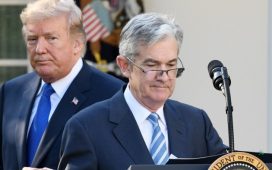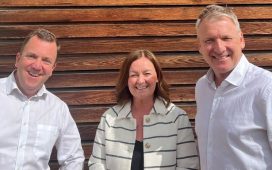Stay informed with free updates
Simply sign up to the US inflation myFT Digest — delivered directly to your inbox.
US inflation cooled again in November, providing more hope that the Federal Reserve has engineered a soft landing for the world’s biggest economy and sending stocks closer to a new record high.
The S&P 500 rose by 0.2 per cent after federal data showed that prices increased more slowly than expected in November, putting Wall Street’s benchmark share gauge within 1 per cent of the all-time closing high it reached in January 2022.
The index has notched up eight straight weeks of gains — a record last achieved in 2017 — and is heading for its third-best year in the past decade after a volatile 12 months.
“There is mounting evidence that the post-pandemic inflation scare is over and we expect interest rates to be cut significantly next year,” said Andrew Hunter, economist at research firm Capital Economics.
President Joe Biden hailed Friday’s report from the Bureau of Economic Analysis as a “significant milestone” in efforts to return inflation back to its pre-pandemic levels.
“As we head into the holidays, prices are down from a year ago on important items including a gallon of gas, a gallon of milk, toys, appliances, electronics, car rentals and airline fares,” Biden said.
The BEA release showed that November’s core PCE inflation reading — economists’ preferred measure because it strips out volatile energy and food prices — rose by just 0.1 per cent month on month, lower than expected.
The figure takes the six-month annualised rate down to 1.9 per cent, just below the Fed’s official 2 per cent inflation target.
The latest fall in so-called core inflation comes just over a week after the central bank surprised markets by signalling that it would begin cutting interest rates next year after a much rosier than expected 2023.
“Once the Fed pivoted, that really put investors into a positive frame of mind,” said Tim Murray, capital markets strategist at T Rowe Price. “We got a rally as a result and its hard to argue with that.”
Futures markets are now pricing in bets that the Fed will cut interest rates as many as six times in 2024, bringing its target rate down from the current 22-year high of 5.25 per cent to 5.5 per cent.
The buoyant mood on Wall Street, coupled with the US’s low unemployment rate, has led analysts to predict that the economy is now set for a soft landing after soaring inflation forced the Fed to raise rates to levels economists expected would trigger a recession.
The most recent gross domestic product data showed that the US economy expanded by an annualised rate of 4.9 per cent in the third quarter, with rate-setters and economists now expecting growth to slow only modestly in 2024.
The figures mean the US has been the strongest performing large economy in the world, recording faster growth and sharper declines in price pressures than most European nations. The Fed is widely expected to cut rates before either the European Central Bank or the Bank of England.
In a boost for Biden’s election prospects, Americans are turning less gloomy about the economy just as the 2024 presidential race gets under way.
Consumer sentiment soared by 14 per cent in the past month, according to a closely watched poll from Michigan university, pointing to growing confidence among the public that the worst bout of inflation for a generation is behind them.
Fifty-five per cent of respondents now expect their incomes to rise at least as fast as prices over the coming year, up from 49 per cent in October.
“Sentiment rose across the population, with increases among consumers of all ages, incomes, education levels, political affiliations and regions of the country,” Michigan’s report said.
Some of the improvement in headline inflation stems from a sharp fall in US petrol costs in recent months, which has pushed average prices to their lowest since the summer of 2021.
While the numbers cheered Wall Street, economists at Citi cautioned against an overly optimistic interpretation of the data, saying prices were still rising too quickly in the services sector.
“Core inflation is weaker because of a major disinflation in goods. That may keep core readings softer in coming months but is not a sustainable way to return inflation to target,” said Andrew Hollenhorst, an economist at the bank.
He also warned of risks that could ruin the outlook, such as disruption to global trade through the Red Sea — where Houthi rebels have launched missiles and drones at commercial vessels.
Fed rate-setters expect to make three rate cuts next year — a sharp reversal for central bank officials who spent months insisting they would not begin loosening monetary policy until they were certain that inflation had been vanquished.
Additional reporting by Jaren Kerr in New York









